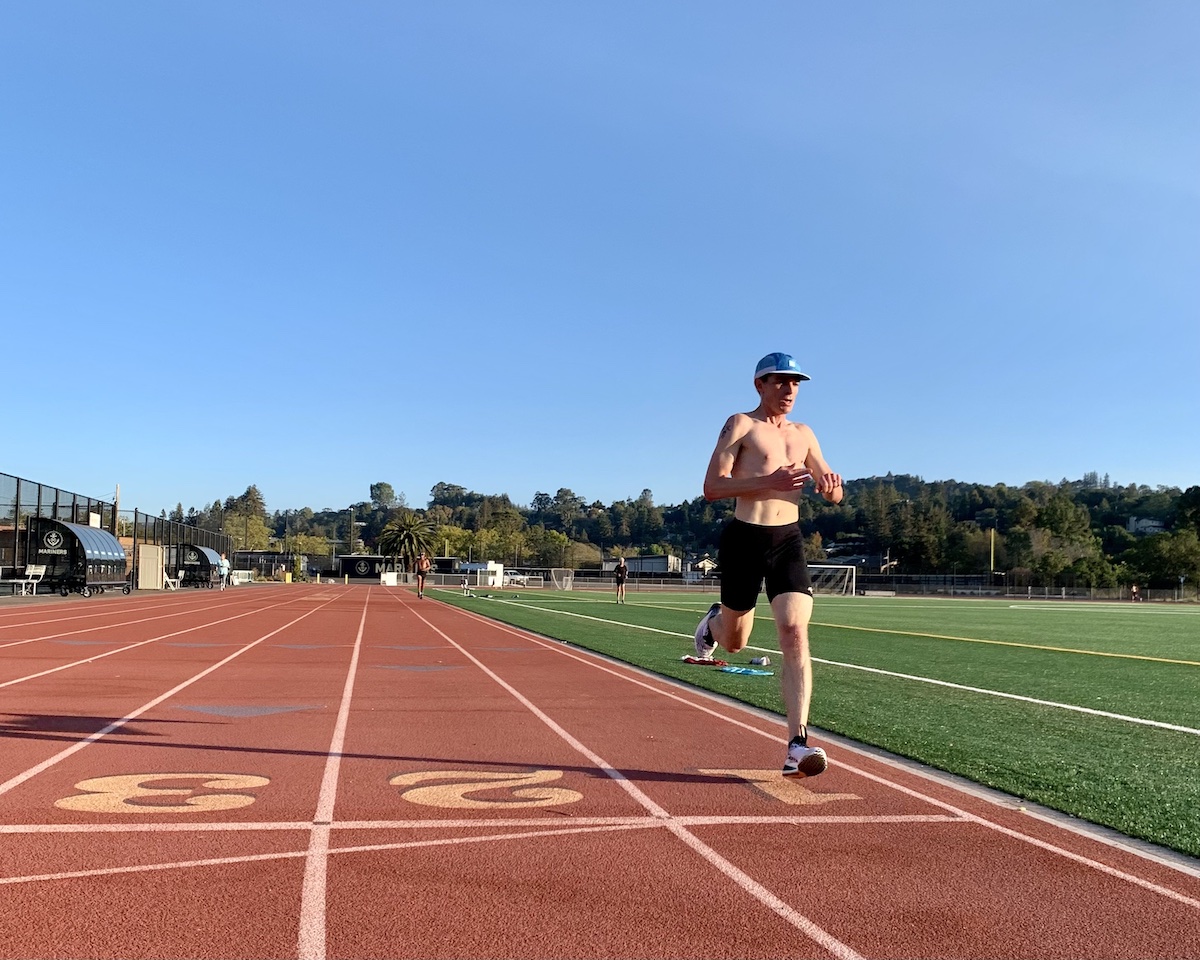Workout of the Week: The Reverse Michigan
|
I first wrote about The Michigan Workout several years ago for Competitor.com. That article now lives in Outside’s Running category—you can read it here—but the gist of the session is that it blends a set of descending intervals on the track (each one gets a little shorter and a little faster) with longer stretches of steadier tempo running off the track. It’s a great mix of strength and speed that can be beneficial to nearly any runner whether they’re training for the mile, the marathon or anything in between. “This is something that is very unique,” legendary Michigan coach and creator of the workout, Ron Warhurst, told Lope Magazine a few years ago. “It’s not just an interval session. This gives the athlete an opportunity to explore where his or her head is at. Where their emotions are. When the grinding starts, it tests your mettle.” A couple years ago I got the idea to assign some of my athletes what I call a “Reverse Michigan,” where we’ll do an ascending ladder on the track—starting with a fast 400m, ending with a strong mile—interspersed with longer stretches of tempo running off the track between intervals. At the end of the day, the Reverse Michigan is the same volume of total work at the same range of intensities—just distributed a little differently than the classic version—but it provides some unique benefits of its own. Here are the details:
What: Start on the track by running 400m (1 lap) at your 1-mile pace. Then rest for about 30 seconds before going right into a 1-mile to 2K tempo at half-marathon pace off the track. Finish back at the track and roll into 800m at your 3K pace (~4-5″/lap SLOWER than you ran the 400). Rest for about 30 seconds before going right into a 1-mile to 2K tempo at half-marathon pace off the track. Finish back at the track and roll into 1200m at your 5K pace (~4-5″/lap SLOWER than you ran the 800). Rest for about 30 seconds before going right into a 1-mile to 2K tempo at half-marathon pace off the track. Finish back at the track and roll into 1600m at your 10K pace (~4-5″/lap SLOWER than you ran the 1200). That’s the end of the workout. It totals 4K worth of faster work on the track and ~5-6K of steadier running off the track, i.e. a LOT of work. If you’re a newer runner or just getting back into speed work you can shorten the tempo portions to 800m and/or end on the 1200m until you’re ready to complete the entire session.
Why: 1. I’ve found that faster intervals are more effective when you’re fresh. 2. You fill your legs with junk from the get-go and are forced to adjust and work through it the rest of the workout. 3. Knowing your last interval is going to be a mile at around your 10K pace is psychologically more challenging and keeps you honest throughout the workout.
Warmup/Cooldown: Warm up before the workout with 15-30 minutes of easy running followed by a set of drills and 4-6 x 20-second strides (i.e., accelerate for 5 seconds, spend the next 10 seconds at near-top speed, and then gradually decelerate to a jog over the final 5 seconds. Catch your breath for 40-60 seconds and then repeat 3-5 more times). Cool down after the workout with 5-15 minutes of easy running.
Where: Ideally you’ll have access to a 400m track and an off-track stretch of pavement or trail to alternate between faster repetitions on the oval and tempo work away from the track, but this workout can easily be translated to the treadmill, it can be done entirely on a marked bike path or trail, or on the roads by keeping an eye on the distance field of your GPS watch.
When: There’s never a bad time to do this workout. In fact, it’s a good benchmark workout to do once every 4-5 weeks as a way to test your fitness and monitor progress. It is very demanding, however, so don’t do it within 10 days of a key race.